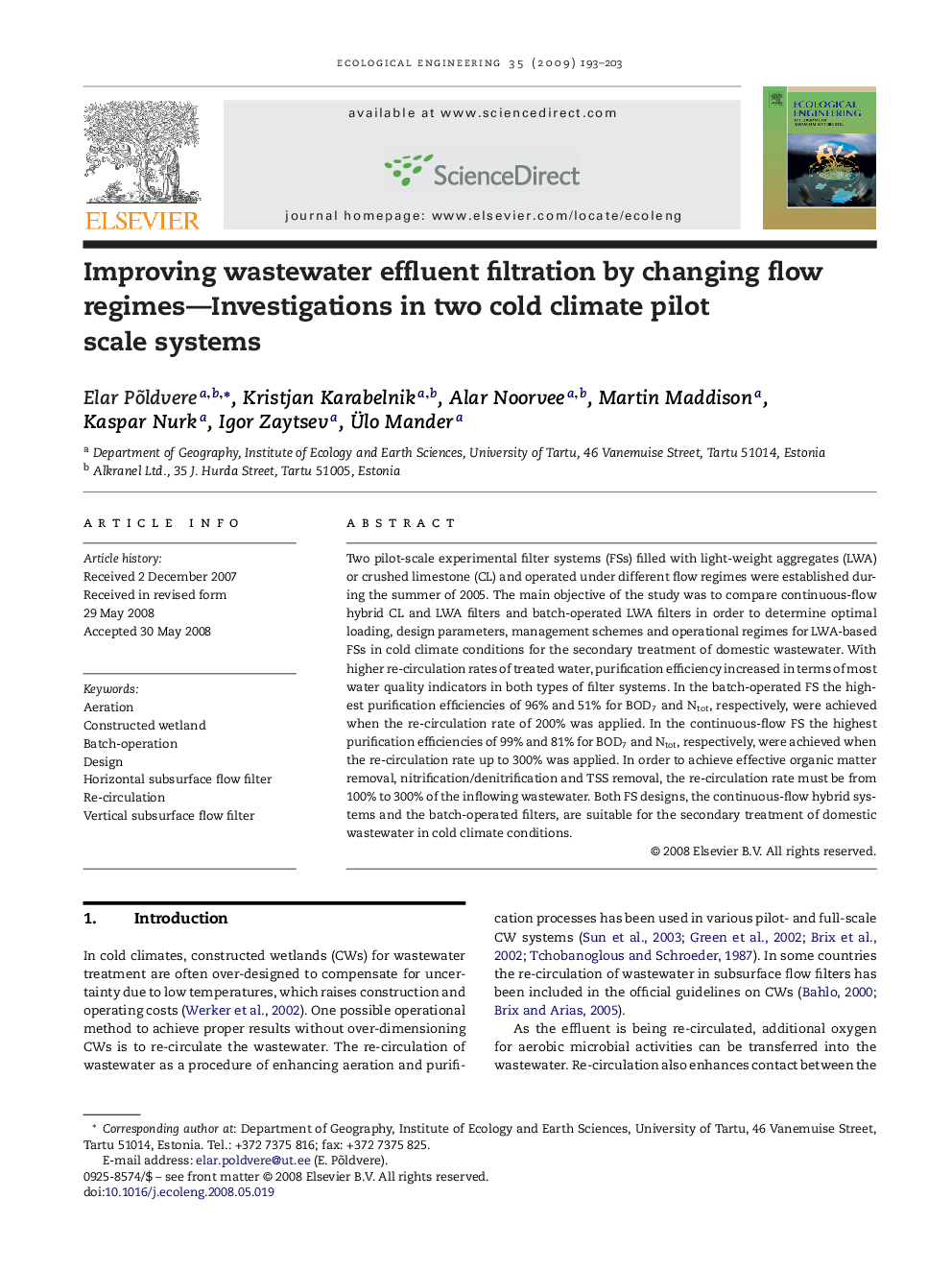| Article ID | Journal | Published Year | Pages | File Type |
|---|---|---|---|---|
| 4391018 | Ecological Engineering | 2009 | 11 Pages |
Two pilot-scale experimental filter systems (FSs) filled with light-weight aggregates (LWA) or crushed limestone (CL) and operated under different flow regimes were established during the summer of 2005. The main objective of the study was to compare continuous-flow hybrid CL and LWA filters and batch-operated LWA filters in order to determine optimal loading, design parameters, management schemes and operational regimes for LWA-based FSs in cold climate conditions for the secondary treatment of domestic wastewater. With higher re-circulation rates of treated water, purification efficiency increased in terms of most water quality indicators in both types of filter systems. In the batch-operated FS the highest purification efficiencies of 96% and 51% for BOD7 and Ntot, respectively, were achieved when the re-circulation rate of 200% was applied. In the continuous-flow FS the highest purification efficiencies of 99% and 81% for BOD7 and Ntot, respectively, were achieved when the re-circulation rate up to 300% was applied. In order to achieve effective organic matter removal, nitrification/denitrification and TSS removal, the re-circulation rate must be from 100% to 300% of the inflowing wastewater. Both FS designs, the continuous-flow hybrid systems and the batch-operated filters, are suitable for the secondary treatment of domestic wastewater in cold climate conditions.
